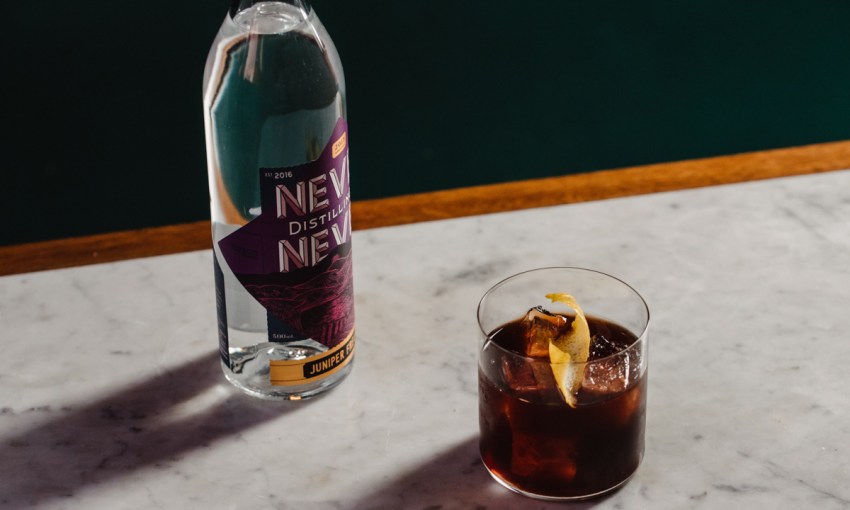It's impossible to keep up with the number of new local gins entering the market, but Gincident is a good opportunity to give it a go. Here are five to try at the event this weekend.
Five new gins to try at Gincident 2019
The South Australian gin industry long ago burst into hyper-drive, and the accolades and recognition from local and international industry types have also kept speed.
Last year saw the debut of Gincident, a locally produced celebration of all things gin, and with its return this year, happening at Hart’s Mill this Saturday, 14 December, comes another opportunity to check out the best of what’s being made with a juniper base here in South Australia and further afield.
The full lineup of producers appearing at Gincident this weekend can be found at the website (where you can also purchase tickets), but for a sneak preview of the event, we rounded up the best new gins and distilleries you might not have tried yet.
For more on Gincident, see the event page.
Happenstance Distillery
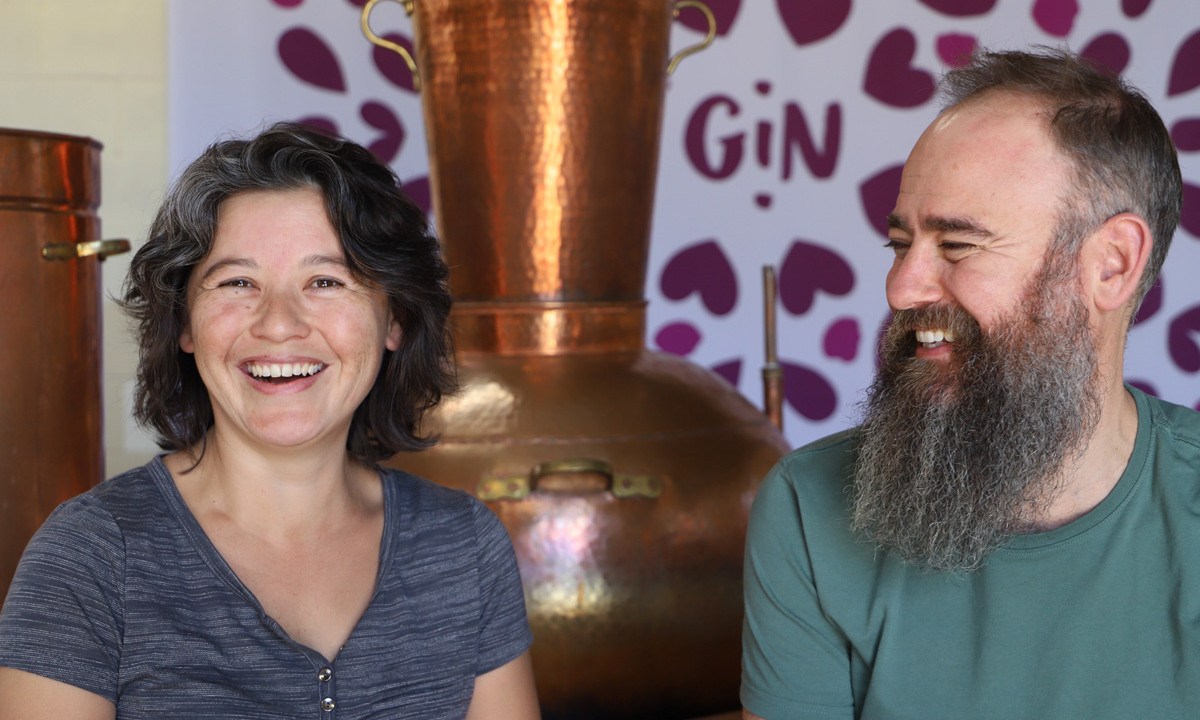
L-R: Happenstance founders Mei Lin and Tim Gilchrist
How did Happenstance Distillery come about?
Happenstance Distillery started as an inkling of an idea when Mei Lin and I (Tim Gilchrist) met through mutual friends and relatives and formed a friendship over a love of gin and a curiosity for distilling.
Neither of us had any distilling experience, so we built knowledge through books, the internet, work experience and study. It reached the point that we had to take the plunge, so we put our best foot forward, found a premises, arranged the appropriate licenses, imported a beautiful hand-forged copper still from Portugal and started distilling for real.
The first batch hit the shelves late in December 2018.
What’s exciting to you about gin?
Gin is so variable and versatile! As a distiller there are boundless opportunities to experiment with new botanicals, and the burgeoning craft gin market means there’s always a new gin to taste and enjoy.
What is Happenstance’s point of difference?
We want to make gins that are approachable and make you smile, both in taste and presentation. We have developed tasty, accessible flavour profiles that we’re keen to drink, so we’re confident gin fans will also enjoy them. And we’ve skewed our presentation toward a more feminine aesthetic. Gin often has lots of bold, typeface-driven branding, we wanted to create something that was friendlier and less masculine.
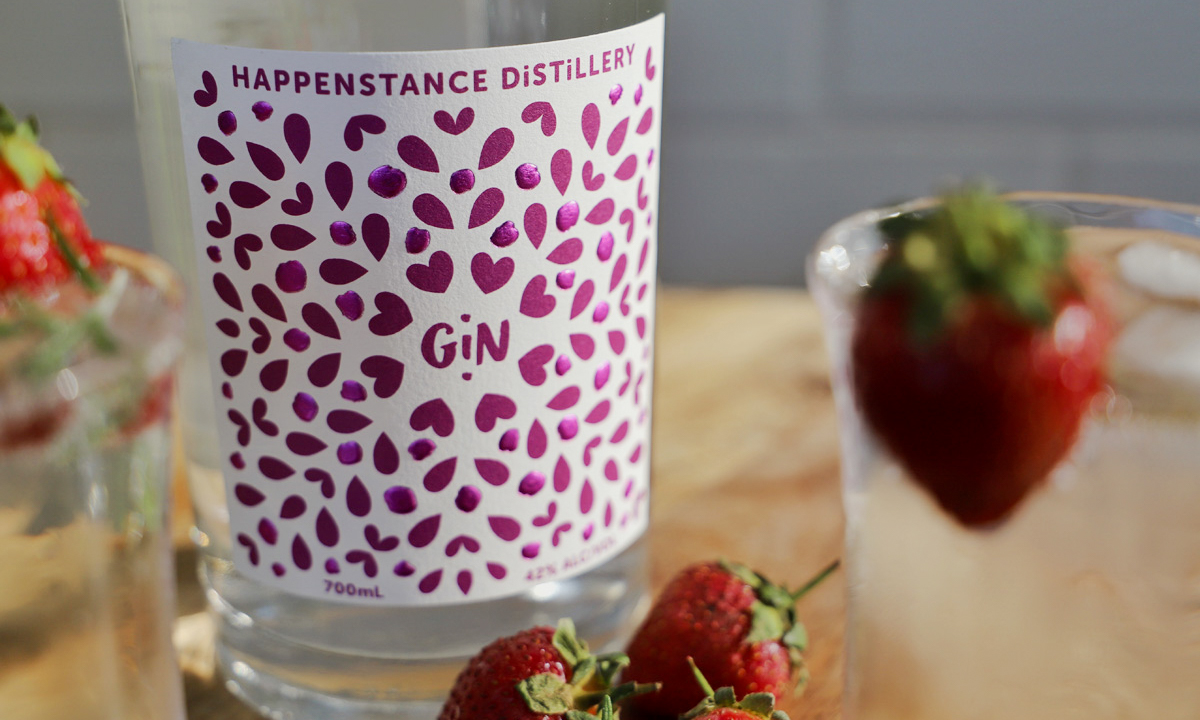
What’s in the Happenstance range?
We have two gins on the market right now, with a third coming soon. Happenstance Gin is citrus forward; lemon, mandarin and lemon myrtle sit on a solid base of juniper, coriander seed and angelica. Spice comes in with fennel and nutmeg and we round it off with strawberry gum and vanilla. This is our go-to for a G&T: Happenstance Gin, a splash of good tonic with a strawberry and sprig of rosemary for garnish.
Fireside Gin is our aromatic winter gin, with spices that also set it up nicely to be sipped at Christmas. There’s plenty of juniper and coriander seed, and loads of wintery spices like cardamom, cloves, cinnamon and ginger. We made it as a winter warmer but it would be perfect to leave out for Father Christmas!
Our Fiesta Gin will hit the market before Christmas. It’s warm and bright like a summer day, and sparkles like the sun on the ocean. Think lime, grapefruit, chilli, star anise and of course juniper!
Which distilleries are you most excited to check out at Gincident?
We can never go past our neighbours Imperial Measures Distilling and their delicious gins! In fact, all of the South Australian distillers are amazing, but we’re also excited to check out the distillers coming over the border to join us.
Lobo Djinn Gin
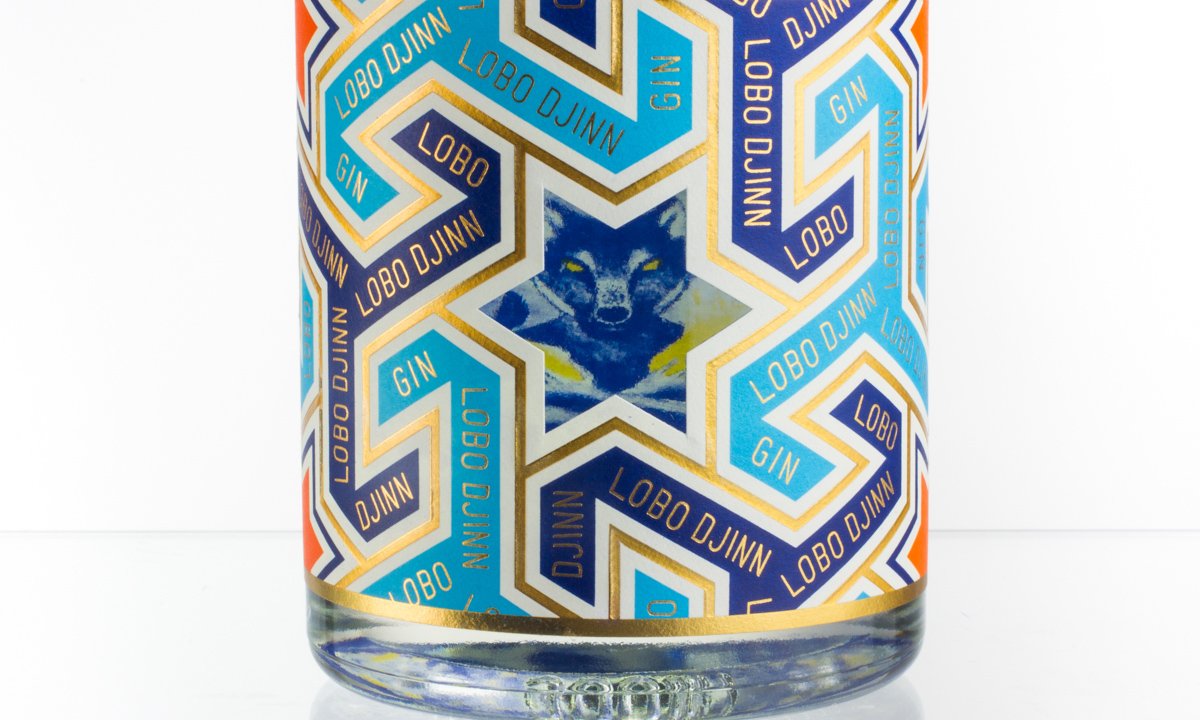
Why were you interested to create your own gin?
We thought about it early in the gin boom, but I (Warwick Billings) figured that people were piling in pretty fast, so decided to stick to our core business of cider (and apple spirits). Then one day Michael [Stafford] (the apple growing half of LOBO) was out harvesting his quince crop and he rang and said what about quince in a gin. Picturing in the aromatic yellow peel of a ripe quince in the botanical mix, my reply was something along the lines of, “That might be a stroke of genius – it will be different, but I reckon it might go really well.”
What style of gin did you hope to create?
So the idea was to make a juniper-forward gin – we wanted a gin that tastes like gin, but then to use the quince aromatics instead of the citrus that most people use in gin botanicals, the idea being that the quince would be there as one of the building blocks of an attractive, rounded, junipery gin, without necessarily being obviously quince. Sometimes I say “Different, but nice different” which sort of explains the sentiment. It’s subtle but beautiful.
How has your history as a cider maker influenced the gin?
As orchard people, we have our own quinces in Lenswood in the Adelaide Hills. We don’t grow citrus here (it doesn’t do so well), so it is perfect as an orchard offering to extend the LOBO range.
I blend stuff in my head, and often it turns out a bit like that in reality when blending the liquids, so when Michael suggested the quinces from his orchard, I joined the dots in my head and there it was.
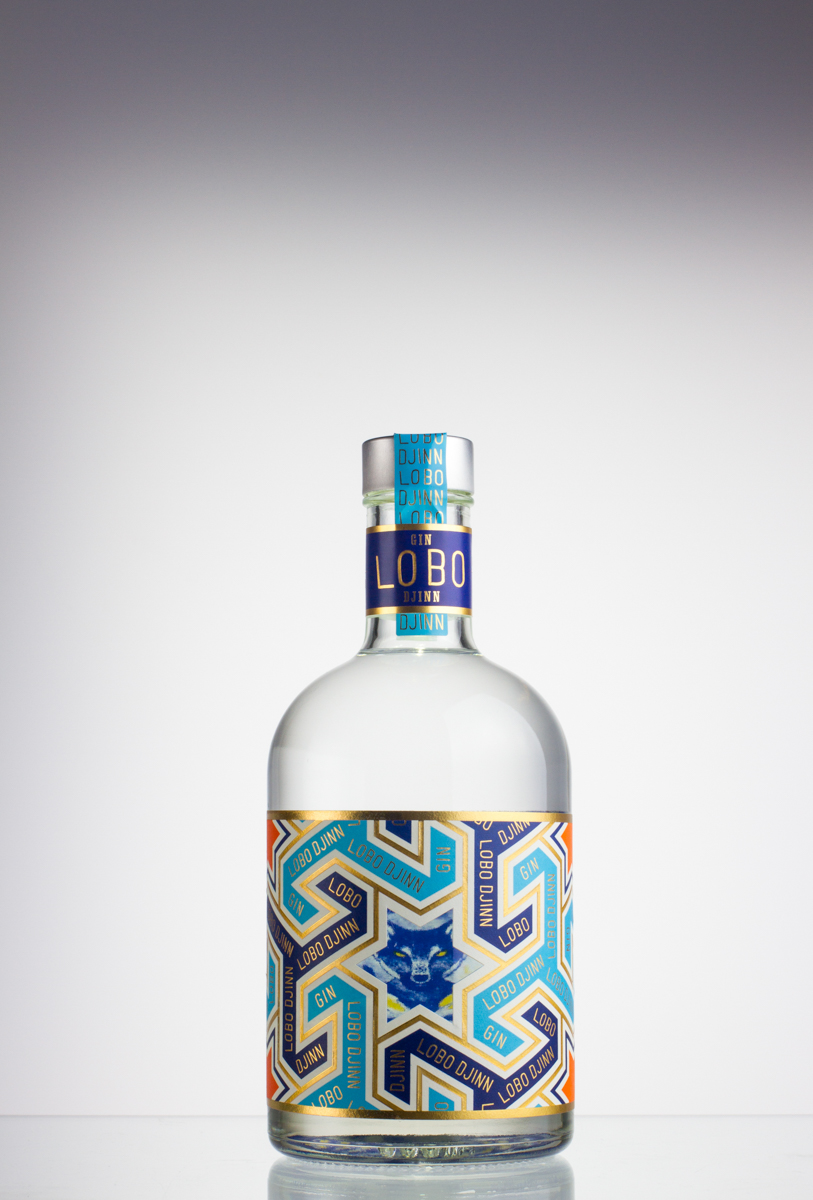
The Lobo Djinn Wolf
What does it taste like?
It’s not quite a London Dry as it has a bit more botanicals coming through. Tasting note would go something like – good juniper lift with attractive hint of quince in the background and rounded botanical array (by which I mean some piney/spicy/peppery notes), with full palate of juniper, and well-integrated botanicals… and a soft aniseed hint coming through on the length.
Soft and smooth finish, drinks well neat. Bold enough to stand up nicely in a cocktail.
What is the best way to enjoy Djinn?
Personally, I’m a fan of keeping it simple; one of the slightly lower sugar tonics, in a G+T, garnish with a slice or two of apple, or a simple Gimlet – with some lime juice, soda and ice.
Udaberri pull out some pretty cool cocktails with our gin. Turns out that cider and gin is a pretty good cocktail too, based on a French 75 cocktail (which uses Champagne), just substitute a good LOBO cider.
5Nines Distilling
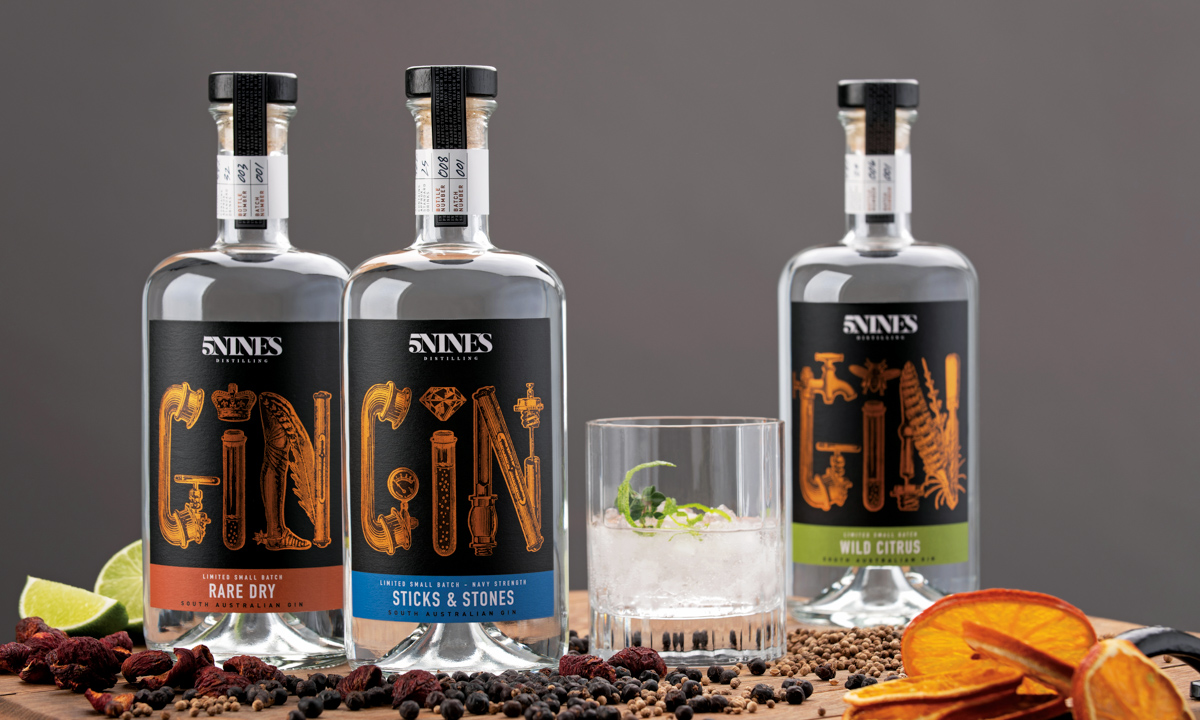
How did 5Nines come about?
Both myself (David Pearse) and my business partner Steven [Griguol] were interested in a bit of a life change, a change of pace. We were travelling around Tasmania with our families in 2015 and visited as many distilleries as we could. We met some amazing distillers creating uniquely Australian spirits. The passion and business grew from there.
What is exciting to you about gin, both as a drinker and a maker?
All of our gins feature local South Australian botanicals like rare desert lime, quandong or native pepperberry. We love the fun of working with local growers and foragers in our regional communities of Kangaroo Island and the Flinders Ranges to find unique flavours.
What is 5Nines’ point of difference, as you see it?
We are very much small-batch, hand-crafted spirits. We focus our production on low-volume and high-quality spirits for as many locally sourced ingredients as we can find.
What’s in the 5Nines range?
We have a range of gins to suit nearly any palate and occasion. From our South Australian botanical filled Rare Dry for a G&T; or the bold and strong Sticks and Stones for a martini; or our most popular Wild Citrus, which goes really well with ginger ale and mint; or finally Grapes of Eden, which is a really interesting liqueur style – this is wonderful after dinner with a cheese plate.
Which distilleries are you most looking forward to checking out at Gincident?
I always love tasting the new Gin releases from all the Australian distilleries, but particularly those from Ambleside and Seppeltsfield Road.
Never Never Distilling’s Juniper Freak

Image: Meaghan Coles
What is the concept behind Juniper Freak?
Juniper Freak Gin is a celebration of juniper. It’s one of only a handful of annual seasonal-release gins around the world, representing the freshest and brightest juniper character from the previous year’s harvest. It’s a rich, navy-strength expression of Never Never’s classic style and a wonderfully intense, aromatic gin.
We are down to our very last few bottles of the 2018 Juniper Freak vintage. Gincident will be one of the last times you will be able to pick it up before this year’s allocation is exhausted, with only a hundred or so bottles left.
Why does it have a vintage label when your other gins don’t?
The vintage is important as it highlights that freshness drives the juniper character that we want to capture in our Juniper Freak Gin. As soon as the yearly vintage of juniper berries are ready to be shipped, we air freight the juniper over for freshness and distil it as soon as it has arrived.
We only go through this process for the Juniper Freak, to allow people to experience the impact of the freshness and variation in this very special product for lovers of big juniper flavour.
What stands out about this vintage in the gin?
2018 was a great year for juniper production, with a wet Balkan summer followed by a dry autumn creating perfect conditions for a high-quality, plentiful harvest. The big, juicy juniper berries gave an incredible fruity character to the 2018 juniper.
Each year we will highlight any particular climatic or other conditions which may affect the taste and texture.
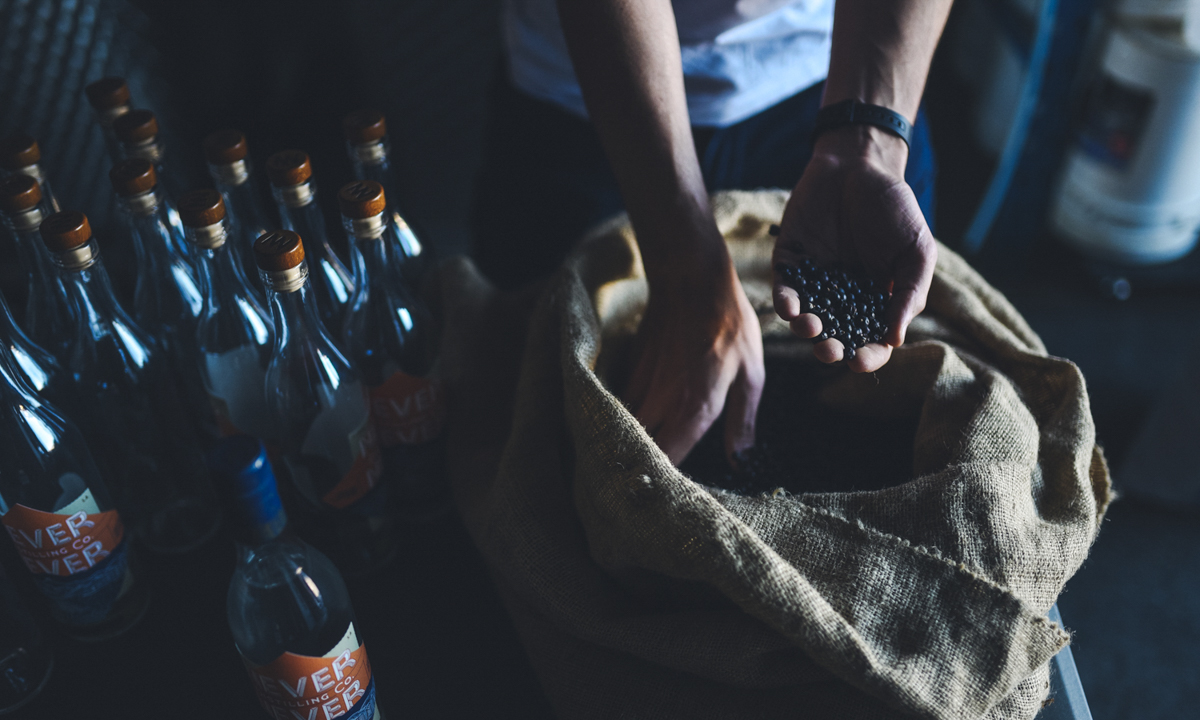
Where did you source the juniper from?
We source all of our juniper from the Republic of North Macedonia. This is an important region when it comes to global juniper supply and is known for its quality and consistency.
Is it treated differently when creating a gin that tries to express vintage?
We treat the juniper differently as soon as it arrives at the distillery. Once we receive the juniper, we immediately distil the shipment using our triple juniper method but without any other botanicals so that we are able capture and isolate the essence of that particular harvest.
Juniper is legally only allowed to be harvested during a short window of the year in Europe, so once this window closes, you have to wait another year to receive new juniper. You can of course still order it from suppliers, however it’s all coming from that one seasonal harvest (and sometimes the years before it, depending on supply).
We always wanted to be first in line, from the minute the product is picked from the tree. We want the brightest, oiliest juniper for our Juniper Freak.
Will juniper Freak be released in this way every year?
We will continue to release the Juniper Freak Gin as a vintage style. It’s expensive, not to mention it ignores every rule in the book about consistency, however we feel that it is a unique product that we make for the true lovers of juniper out there.
What is the best way to enjoy Juniper Freak?
Due to the ultra-high concentrations of juniper that can be found in the bottle, it makes one of the world’s best gin and tonics (in our humble opinion). We like to garnish with pink grapefruit and rosemary as it beautifully complements the flavours found in the gin. Due to the gins concentrated character, it doesn’t get lost amongst the intensity of bright rosemary and aromatic grapefruit. It also makes a really rich, tasty Freaky Negroni.
Ambleside Distillery’s Coffee Liqueur
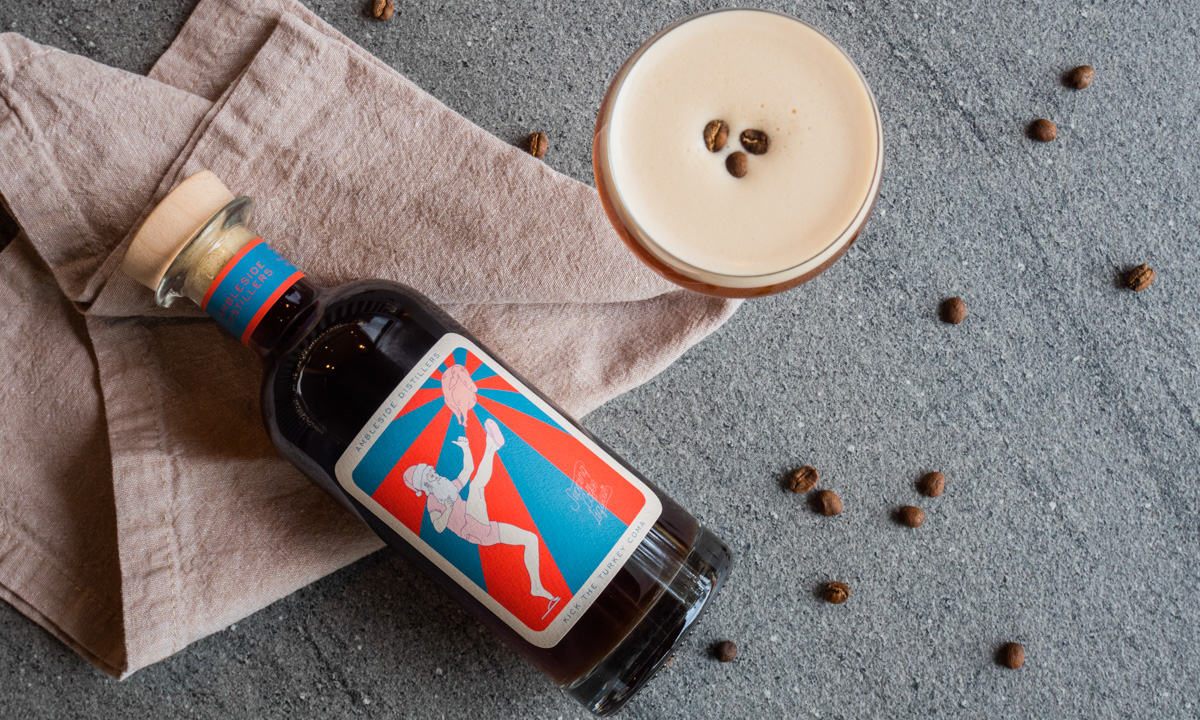
Admittedly not a gin, but still good
Where did your interest in coffee liqueur come from?
Our interest in using coffee as an ingredient started from using coffee beans as a garnish for one of our G&Ts. This then naturally progressed into, ‘Let’s make some booze with this!’
Starting with a really high-quality bean meant you can use this one ingredient to shape the flavour profile of the product to gain more than just coffee flavours.
What is the Ambleside take on a coffee liqueur?
We wanted to take on a Christmas vibe with this product, using this as a way to be able to make a liqueur that was maybe a little different from the others on the market. We’ve added in botanical flavours that represent the Christmas vibe and designed the packaging around a pretty specific Christmas message.
What are the tasting notes?
From the coffee, we get rich flavours of vanilla, toffee and yellow peach. We then distilled and steeped dates, cassia bark, bunya nuts and almonds. The dates add to the rich flavours while the cassia bark gives a little festive spice. The different nuts then add a little creaminess to finish.
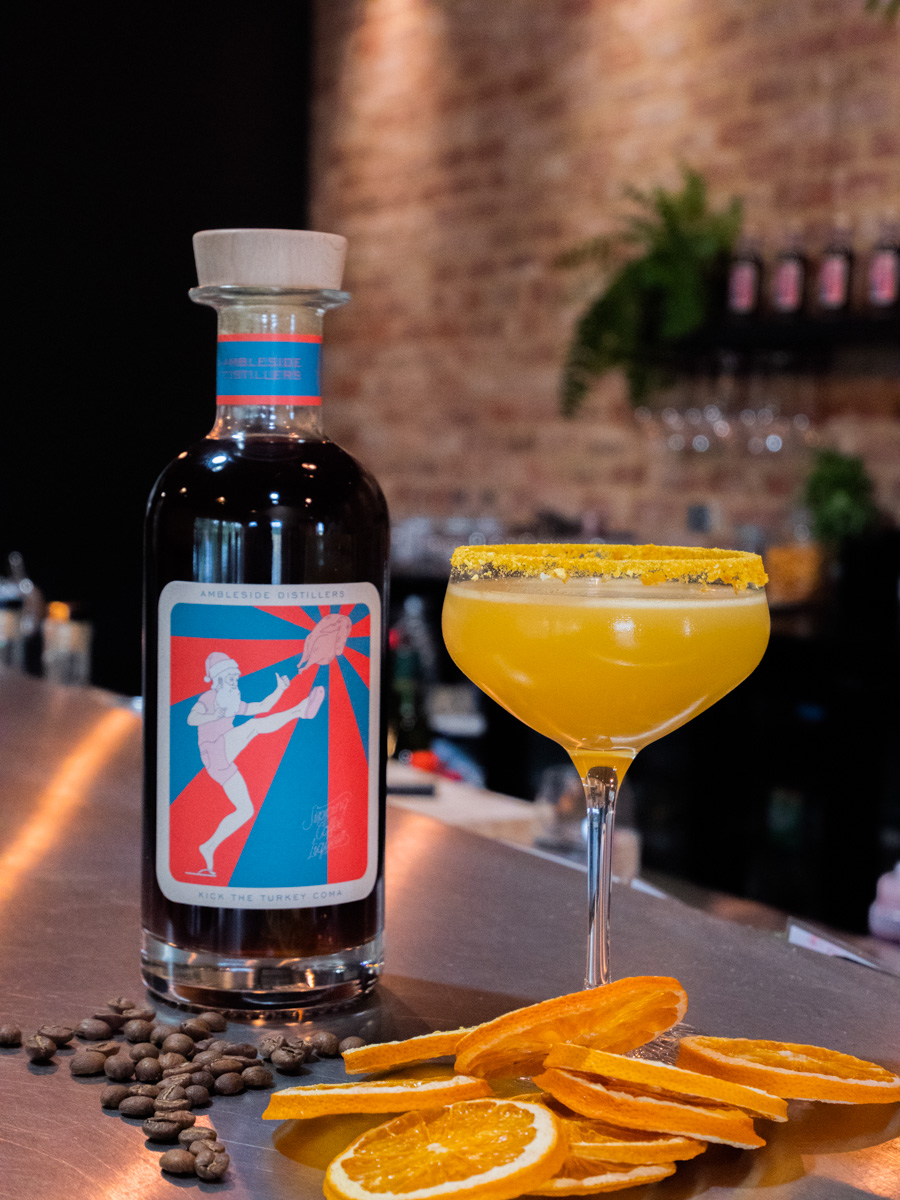
What is the best way to enjoy your coffee liqueur?
We recommend serving over ice or ice cream to get you back on your feet after a big Christmas lunch. If you want to shake it into an espresso martini and really get back on your feet, that’s also an option!
Did you have any collaborators for the project (coffee roasters or the like)?
Two Fish Coffee, a local Hills roaster, has provided us with all the beans and grounds used in this project. With Ryan’s help we were also able to select a bean with a pretty good story attached. See this link.
What else will you have on show at Gincident?
We will have our three gins we currently produce on show for the crowds at Gincident, the No.8 Botanical Gin, Small Acre Gin and the Big Dry.
Which other distilleries are you keen to check out at Gincident this year?
It’s hard to go past the all the SA producers, but, Animus have brought out some great stuff recently, and also Archie Rose usually has some little experiment they are keen to try out so I’ll be keeping an eye on those two.



